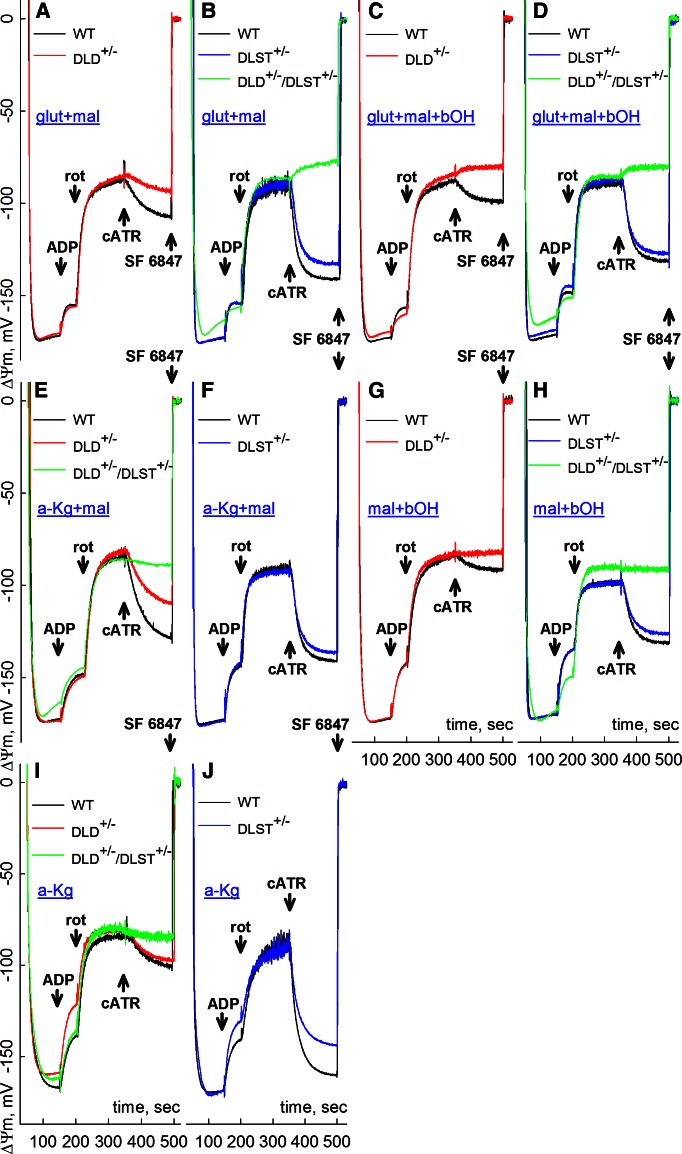Figure 2.
Effect of cATR (2 μM) on ΔΨm of mouse brain mitochondria of WT vs. DLD+/− (A, C, E, G, I), DLST+/− (B, D, F, H, J), or DLD+/−/DLST+/− double-transgenic mice (B, D, E, H, I) compromised at complex I by rotenone (rot; 1 μM), in the presence of different substrate combinations: glutamate + malate (A, B), glutamate + malate + β-hydroxybutyrate (C, D), α-ketoglutarate + malate (E, F), malate + β-hydroxybutyrate (G, H), and α-ketoglutarate (I, J). ADP (2 mM) was added where indicated. Substrate concentrations: glutamate (glut), 5 mM; malate (mal), 5 mM; β-hydroxybutyrate (bOH), 2 mM; α-ketoglutarate (a-Kg), 5 mM. At the end of all experiments, 1 μM SF 6847 was added to achieve complete depolarization. The WT mice compared with the DLD+/− littermate mice are of C57BL/6 genetic background. The WT mice compared with the littermate DLST+/− mice are of C57BL/6 and 129SV/EV hybrid genetic background. DLD+/−/DLST+/− double transgenic mice are of either C57BL/6 only or C57BL/6 and 129SV/EV hybrid genetic background. Because of this background heterogeneity, some of the traces from WT mice appear in several panels in order to match as littermates of the KGDHC-deficient mice.

